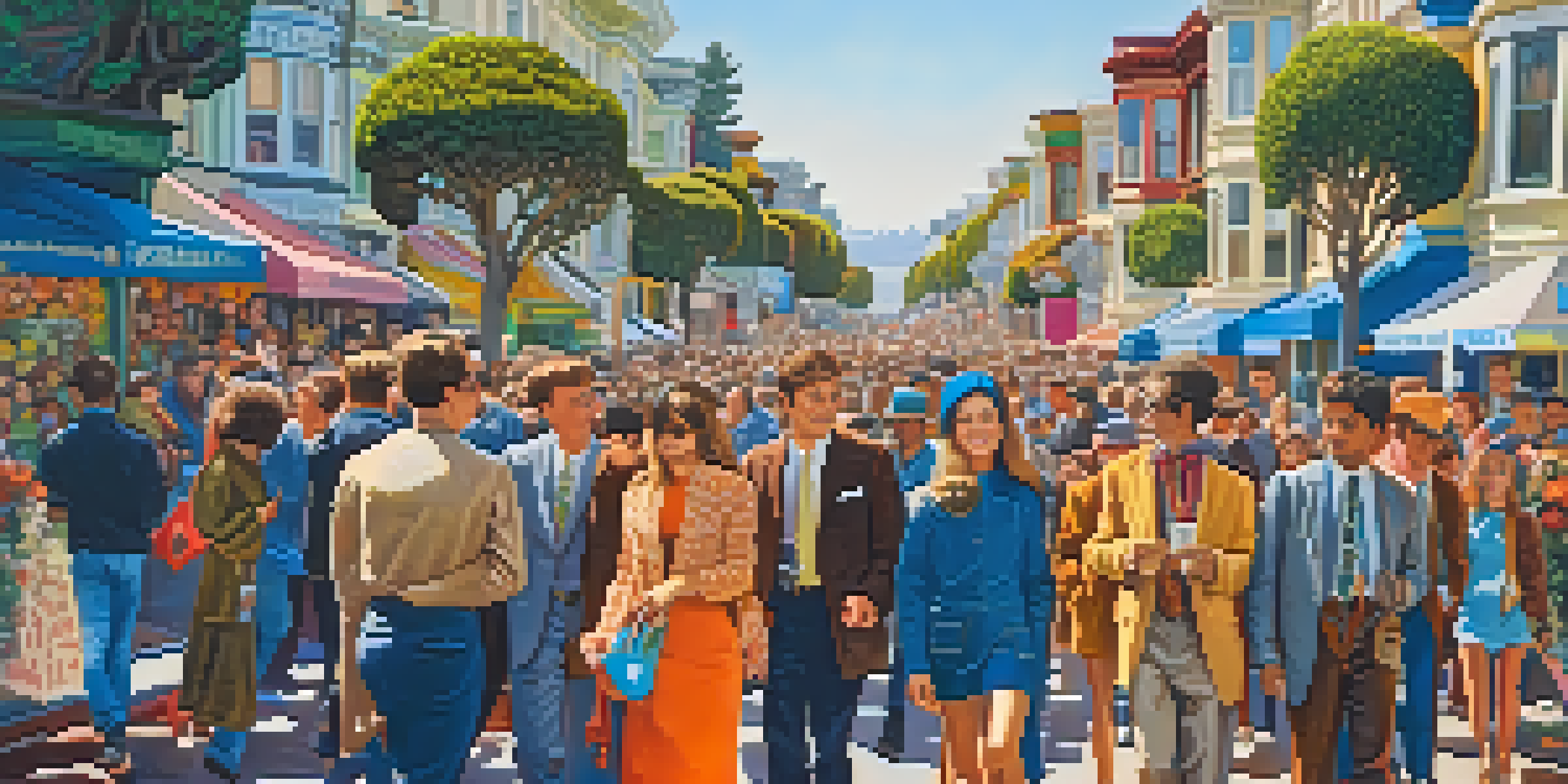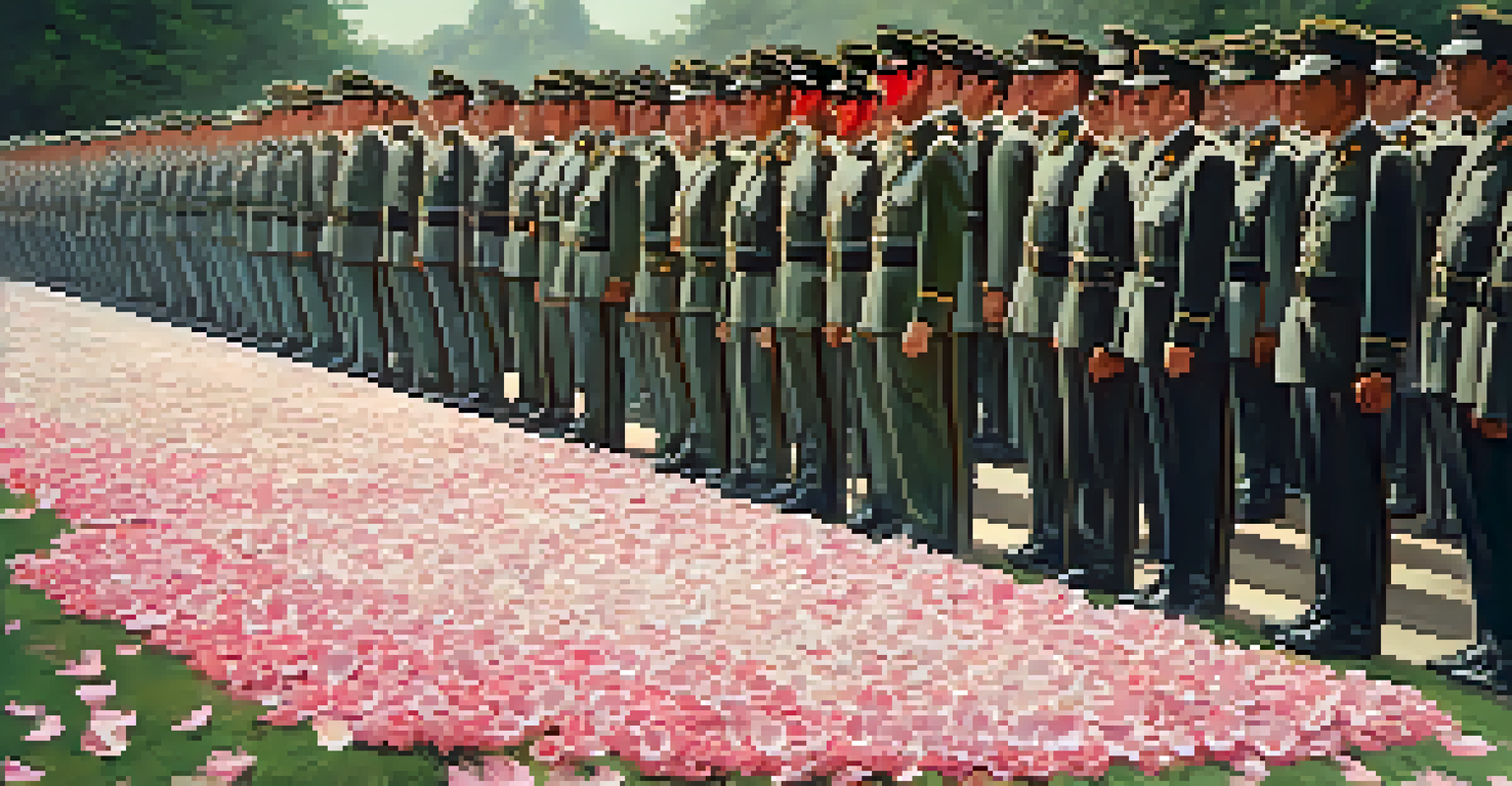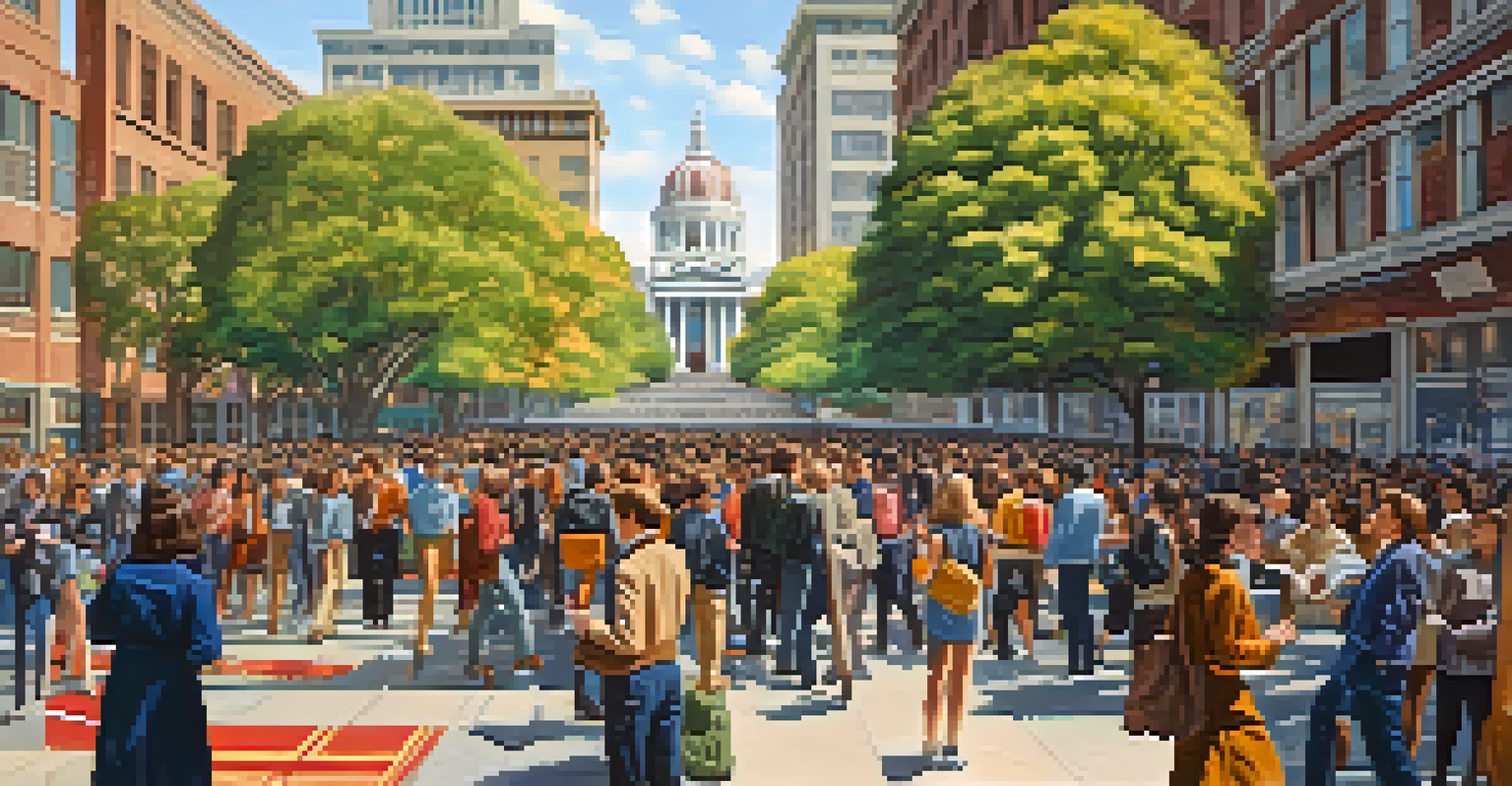Anti-Vietnam War Protests: SF as a Catalyst for Change

San Francisco: A Ground Zero for Dissent
In the 1960s, San Francisco emerged as a vibrant epicenter for anti-war sentiment. The city's rich cultural diversity and progressive values attracted thinkers, artists, and activists, all united by a common cause—the opposition to the Vietnam War. As thousands flocked to the Bay Area, the atmosphere buzzed with ideas of peace and civil rights, setting the stage for transformative protests.
The most potent weapon in the hands of the oppressor is the mind of the oppressed.
The Haight-Ashbury district became synonymous with counterculture, drawing young people eager to challenge the status quo. Here, budding movements found their voice, and rallies began to take shape. The mix of music, literature, and art created a fertile ground for activism, making San Francisco a beacon of hope for those advocating for peace.
As protests gained momentum, they not only brought attention to the war but also highlighted broader social injustices. The energy in the city was palpable, with people from all walks of life standing together, demanding change. This collective spirit fueled a wave of activism that would ripple across the nation.
Key Figures in the Movement
The anti-Vietnam War movement in San Francisco was powered by a diverse group of individuals, each playing a pivotal role. Figures like Jerry Rubin and Abbie Hoffman emerged as charismatic leaders, using their platforms to galvanize public opinion. Their ability to articulate the frustrations of a generation turned them into symbols of resistance against the war.

Additionally, local organizations, such as the San Francisco State University’s Students for a Democratic Society (SDS), mobilized students and community members alike. They organized rallies, teach-ins, and sit-ins, educating people about the war's human costs and rallying support for the anti-war cause. The enthusiasm and determination of these activists made a lasting impact.
San Francisco as a Protest Hub
In the 1960s, San Francisco became a vibrant center for anti-war activism, attracting diverse voices united against the Vietnam War.
Moreover, cultural icons like Joan Baez and Bob Dylan used their music to spread anti-war messages, amplifying the movement's reach. Their songs became anthems for peace, resonating with the emotions of a disenchanted youth. Through music, they united people and inspired action, showing the power of art in social change.
The Role of Universities
Universities in San Francisco played a crucial role in mobilizing anti-Vietnam War sentiment. Campuses became hotbeds of activism, where students engaged in passionate discussions about the war's implications. The youthful energy of these institutions fostered a sense of urgency, compelling students to take action and demand accountability from their government.
In a time of deceit telling the truth is a revolutionary act.
San Francisco State University, in particular, was at the forefront of the movement. Students organized strikes and protests, challenging the administration's complacency regarding the war. The university’s activism inspired similar actions across the country, showcasing the power of student voices in shaping public discourse.
Additionally, these institutions provided a platform for speakers and intellectuals to discuss the moral and ethical implications of the war. The exchange of ideas enriched the movement, as students learned about the realities of conflict and the importance of standing up for their beliefs. This intellectual climate helped crystallize the anti-war message.
Iconic Protests and Events
The anti-Vietnam War protests in San Francisco are marked by several iconic events that drew national attention. One such event was the 1967 'March on the Pentagon,' which saw thousands of protesters converge on the military headquarters. This demonstration symbolized the growing discontent with U.S. involvement in Vietnam and showcased the strength of the anti-war movement.
Another significant moment was the 'Flower Power' rally in 1967, where activists famously threw flowers at soldiers as a gesture of peace. This peaceful demonstration highlighted the movement's commitment to nonviolence and love, contrasting sharply with the violence of the war. It captured the imagination of the public and became an enduring symbol of the era.
Influential Figures and Art
Charismatic leaders and cultural icons, along with music and art, played a crucial role in amplifying the anti-war message and mobilizing support.
These protests not only galvanized local support but also inspired similar actions across the globe. The images and stories that emerged from these events spread quickly, illustrating the power of grassroots activism. San Francisco's protests became a touchstone for those advocating for justice and peace worldwide.
Media Influence on Protest Dynamics
The media played a pivotal role in shaping the narrative around the anti-Vietnam War protests in San Francisco. News coverage brought the realities of the war into living rooms across America, sparking outrage and empathy. Graphic images and eyewitness accounts of protests helped to humanize the struggle and raise awareness about the movement's goals.
Television broadcasts, in particular, allowed activists to reach a broader audience, galvanizing support from those who might not have been directly involved. Programs featuring footage of protests and interviews with activists made the anti-war message more relatable, helping to bridge the gap between protestors and the general public. This visibility was crucial in building a national movement.
As the protests unfolded, journalists began to see the importance of covering the anti-war sentiment. They not only reported on events but also highlighted the voices of those affected by the war. This shift in media focus contributed to a growing public sentiment against the war, creating a powerful feedback loop that fueled further protests.
The Impact of Music and Art
Music and art were integral to the anti-Vietnam War movement in San Francisco, serving as both a rallying cry and a means of expression. Artists and musicians used their talents to craft messages of peace, love, and resistance that resonated deeply with the public. Concerts and art shows became platforms for activists to share their vision and inspire action.
The iconic Summer of Love in 1967 exemplified this connection between art and activism. The event brought together artists, musicians, and activists in a celebration of peace and love, drawing thousands to the Haight-Ashbury district. Through this cultural explosion, the anti-war message was woven into the very fabric of the era, making it impossible to ignore.
Enduring Legacy of Activism
The strategies and spirit of solidarity from San Francisco's protests continue to inspire contemporary movements for social justice and change.
Moreover, the music of the time became anthems for the movement, with songs that articulated the frustrations and hopes of a generation. Tracks like 'Give Peace a Chance' echoed through the streets, uniting protestors and fostering a sense of community. This artistic expression not only provided an outlet for emotions but also solidified the anti-war movement's identity.
Lasting Legacy of San Francisco's Protests
The legacy of the anti-Vietnam War protests in San Francisco is still felt today, influencing contemporary activism. The strategies and tactics developed during this time continue to inspire movements focused on social justice, environmental issues, and human rights. Activists today often look back at the lessons learned from these protests as they fight for change in their own communities.
Additionally, the spirit of solidarity that characterized the anti-war movement has become a cornerstone of modern activism. The idea that collective voices can effect change resonates strongly in today’s climate, where grassroots movements are gaining traction. San Francisco's protests serve as a reminder of the power of community in the face of adversity.

As we reflect on this pivotal moment in history, it's important to recognize the courage of those who stood up against the war. Their commitment to peace and justice not only changed the course of American history but also paved the way for future generations to carry the torch of activism. San Francisco remains a symbol of hope and resilience in the fight for a better world.